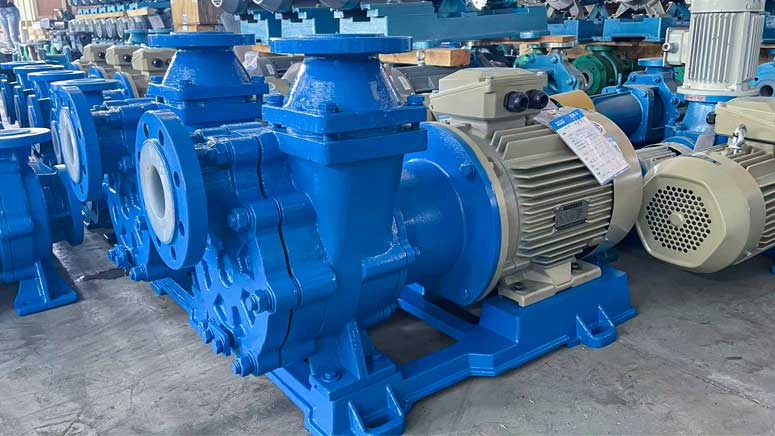Fluorine-lined self-priming pumps are widely used in chemical, pharmaceutical, and environmental industries due to their excellent corrosion resistance and self-priming capabilities. However, users sometimes encounter problems with reduced flow at the pump outlet. This article will analyze the causes of reduced flow at the outlet of fluorine-lined self-priming pumps and provide corresponding solutions to help users maintain efficient pump operation.
Common Causes and Solutions
1.Blocked Suction Line
Debris or deposits in the suction line can obstruct liquid flow, reducing the pump's inlet flow and affecting the outlet flow.
Solution:Regularly inspect and clean the suction line to ensure it is unobstructed. If a blockage is found, promptly clear or replace the line.
2.Worn or Damaged Impeller
The impeller is the core component of the pump, and its wear or damage can lead to decreased flow and efficiency.
Solution:Regularly check the condition of the impeller. If wear or damage is detected, replace or repair the impeller promptly to restore normal flow.
3.Aging Seals Inside the Pump
Aging or damaged seals inside the pump can cause internal leakage, affecting the pump's flow output.
Solution:Regularly inspect and replace the seals inside the pump to ensure good sealing and prevent internal leakage.
4.Increased Viscosity of the Transported Medium
An increase in the viscosity of the transported medium can lead to reduced pump flow. This situation typically occurs with changes in temperature or the composition of the medium.
Solution:Monitor changes in the viscosity of the medium and, if necessary, adjust the medium temperature or use suitable diluents to reduce viscosity and ensure normal pump flow.

5.Reduced Pump Speed
The pump speed directly affects the pump's flow output. If the pump speed decreases, the flow will also reduce accordingly.
Solution:Check the pump's drive unit, such as the motor and frequency converter, to ensure they are operating normally. Adjust or replace the drive unit if necessary to restore normal pump speed.
6.Blocked Discharge Line
Blockages in the discharge line can reduce outlet flow. This may be caused by deposits, foreign objects, or narrowing of the line.
Solution:Regularly inspect and clean the discharge line to ensure it is unobstructed. If a blockage is found, promptly clear or replace the line.
Preventive Measures
To prevent problems with reduced flow at the outlet of fluorine-lined self-priming pumps, users can take the following preventive measures:
Regular Maintenance and Inspection:Regularly inspect the condition of the suction line, impeller, seals, and discharge line to detect and address potential issues promptly.
Monitor the Transported Medium:Regularly monitor changes in the viscosity and composition of the transported medium to ensure it remains within the pump's allowable range.
Maintain Proper Operation:Follow the manufacturer's operating instructions to use the pump correctly, ensuring proper procedures during startup and shutdown.
Fluorine-lined self-priming pumps have significant advantages in handling corrosive liquids, but problems with reduced outlet flow can arise during use. By understanding and troubleshooting the common causes listed above, users can effectively resolve these issues and ensure the efficient and stable operation of their pumps. Regular maintenance and proper operation are key to maintaining the high efficiency of fluorine-lined self-priming pumps.





 +86 18130251359
+86 18130251359 teflowpumps@tlpumps.com
teflowpumps@tlpumps.com








 +86+0563-5093318
+86+0563-5093318
